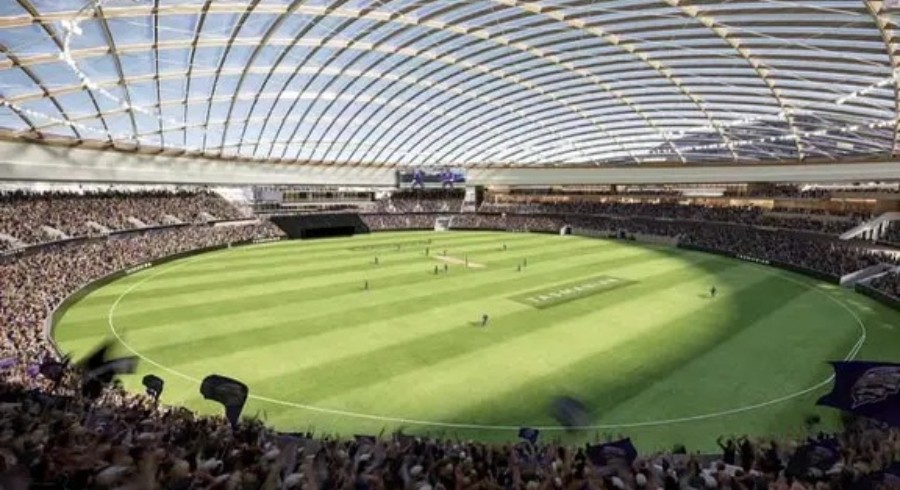The proposed 23,000-seat multipurpose venue at Macquarie Point will feature a transparent roof, allowing for both daytime cricket and floodlit T20 matches
 PHOTO: AFP
PHOTO: AFP
In an exciting development for Australian cricket and sports infrastructure, Hobart is planning to build a groundbreaking indoor stadium capable of hosting Test cricket. This ambitious project is part of Tasmania's bid to join the Australian Football League (AFL) in 2028 and aims to put the island state at the forefront of sporting innovation.
The proposed 23,000-seat multipurpose venue at Macquarie Point will feature a transparent roof, allowing for both daytime cricket and floodlit T20 matches. This unique design could make Hobart the first place in the world to host indoor Test cricket.
Anne Beach, CEO of Macquarie Point Development Corporation, highlighted the focus on red-ball cricket.
“We want to get to red-ball [cricket], that's our focus. The tricky thing is…we can't be accredited until it's built so what we need to do is keep working through the detail and design process with Cricket [Tasmania] and Cricket Australia and work with them to brief ICC to make sure they have all the information available,” Beach told SEN Tassie.
“We are workshopping with them through detailed design so we are making sure we are factoring in everything they need, [so] they have a clear understanding of how it's coming together then hopefully that sign-off process is pretty smooth. But we do want to get that red-ball sign-off and that's critical I think to enable that full content to be in the stadium,” he further added.
The stadium's design has been carefully planned to address specific cricket concerns. Alistair Richardson, CEO of Cox Architecture, explained their approach to roof height.
“Cricket's biggest concern was the height of the roof…they cited concerns with Marvel Stadium [in Melbourne] where the ball could potentially hit the roof. What we've done is we've worked through looking at Hawk-Eye and the ball-tracking technology, to assess the maximum height that anyone's hit a ball, which is quite interesting,” Richardson said.
The design also aims to minimize shadows on the playing surface, a crucial factor for cricket visibility. David Boon, former Australian cricketer and Cricket Tasmania chairman, expressed his excitement for the project.
“There is a wonderful opportunity for Tasmania to be a leader in innovation for the future of the game. We want to play cricket in this stadium and look forward to working collaboratively with all parties over the coming months as the design is finalized,” Boon said.